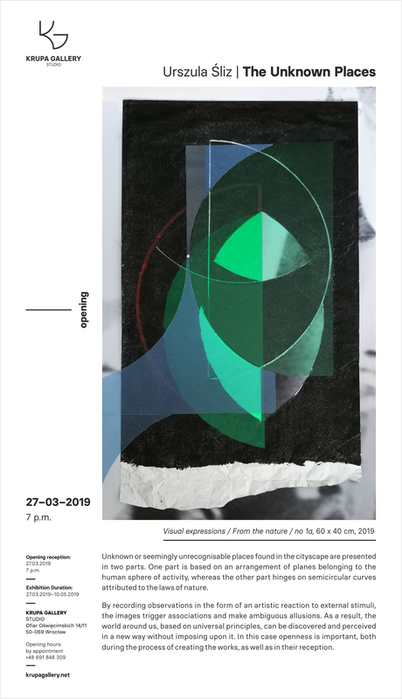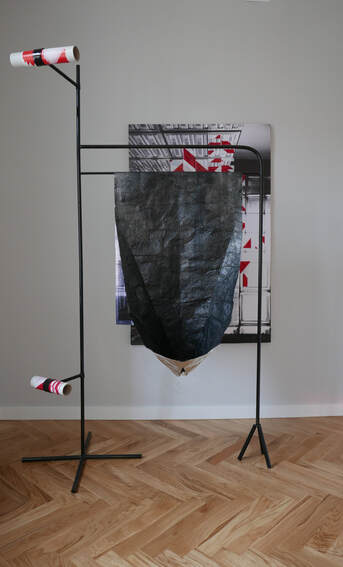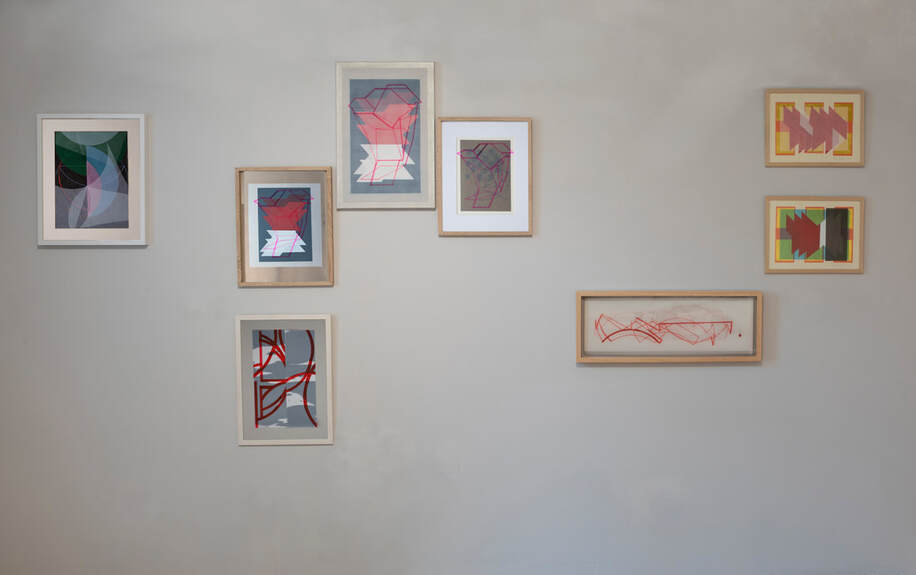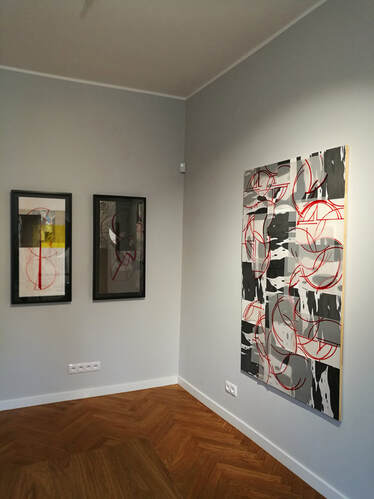The Unknown Places, Krupa Gallery, Wrocław 2019
It records the visible reality in which the properties of objects, their constituent elements or details, have been subordinated to the principle of cohesion and transparency of the entire composition. The existence of dependencies is presented as an essential feature of the worldview. The human mind overcomes cognitive dissonance by opting for a familiar world, but other worlds exist outside of it, too. Venturing into them triggers a sense of insecurity, which prompts us to look at the world from a different perspective.
According to the artist’s conception, unknown or seemingly unrecognisable places found in the cityscape are presented in two parts. One part is based on an arrangement of planes belonging to the human sphere of activity whereas the other one hinges upon semicircular curves attributed to the laws of nature.Ambiguity is particularly interesting. Depending on the angle, the perception of the image changes. The transparency of many layers of materials results in a loss of their properties and creates a reversed effect of mock transparency, which changes the sense of the statement spotted drawings. The visual expression is approached on a micro and macro scale, as if a sample was placed under the microscope in order to observe the subtle details. Abstraction does not turn into symbols, but touches on the memory of what different notions may mean.
The presented works were made in the laboratory system. The consistence of the cycle is based on the conception behind it, although at a glance the pieces seem to have been created in a highly varied manner. However, a careful and attentive viewer will discover elements binding the works into a coherent whole.
Juxtaposing the shiny or mat surface of the foil with expressive drawing, using photography that has lost its basic feature of a carrier recording the image of reality, combined with the silver aluminium background – all of it provides references to the contents of the artistic statement. The final result is not intended to be aesthetic in character.
Urszula ŚLiz©, Wrocław 2019
According to the artist’s conception, unknown or seemingly unrecognisable places found in the cityscape are presented in two parts. One part is based on an arrangement of planes belonging to the human sphere of activity whereas the other one hinges upon semicircular curves attributed to the laws of nature.Ambiguity is particularly interesting. Depending on the angle, the perception of the image changes. The transparency of many layers of materials results in a loss of their properties and creates a reversed effect of mock transparency, which changes the sense of the statement spotted drawings. The visual expression is approached on a micro and macro scale, as if a sample was placed under the microscope in order to observe the subtle details. Abstraction does not turn into symbols, but touches on the memory of what different notions may mean.
The presented works were made in the laboratory system. The consistence of the cycle is based on the conception behind it, although at a glance the pieces seem to have been created in a highly varied manner. However, a careful and attentive viewer will discover elements binding the works into a coherent whole.
Juxtaposing the shiny or mat surface of the foil with expressive drawing, using photography that has lost its basic feature of a carrier recording the image of reality, combined with the silver aluminium background – all of it provides references to the contents of the artistic statement. The final result is not intended to be aesthetic in character.
Urszula ŚLiz©, Wrocław 2019




